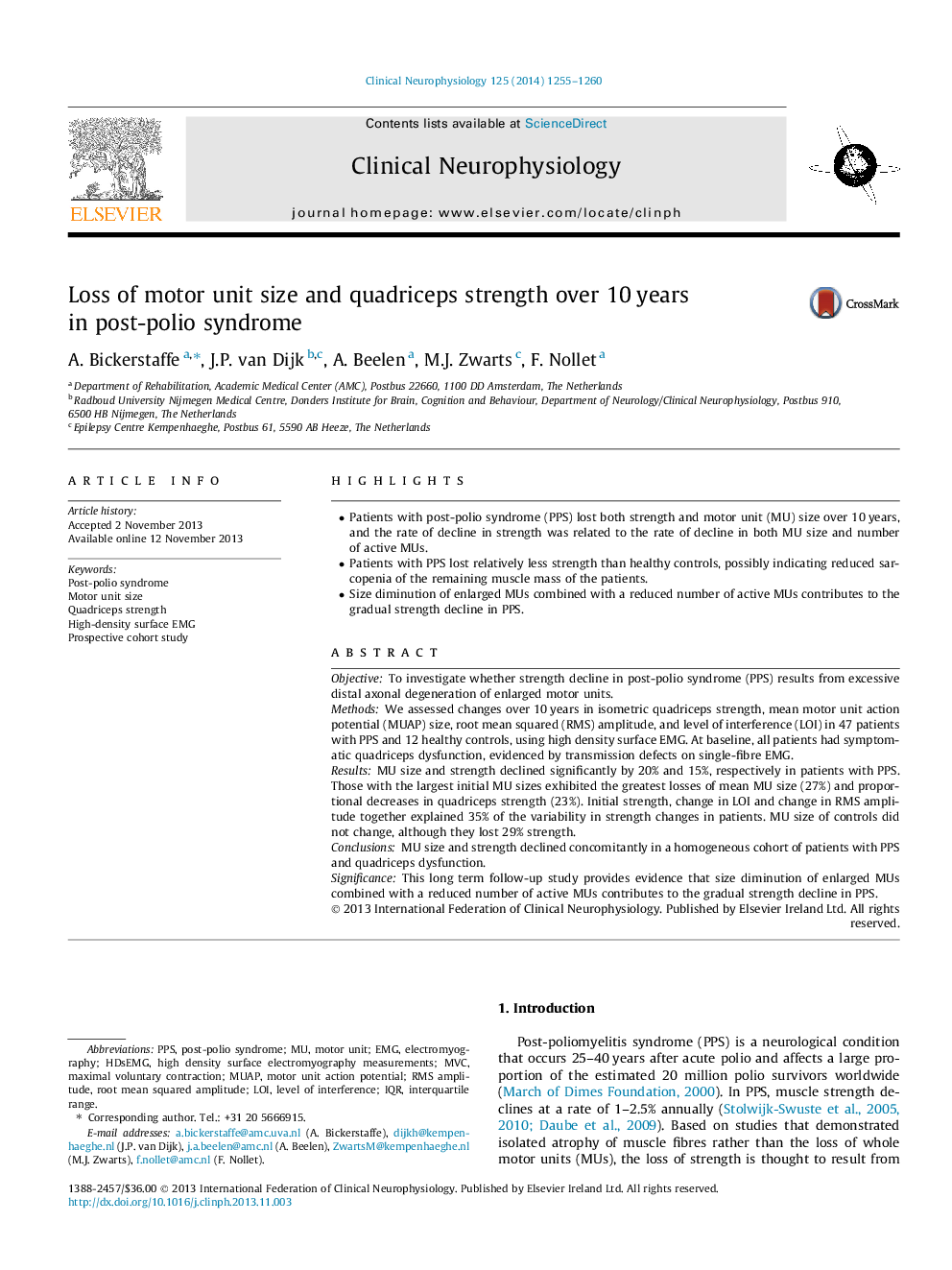| Article ID | Journal | Published Year | Pages | File Type |
|---|---|---|---|---|
| 6008547 | Clinical Neurophysiology | 2014 | 6 Pages |
â¢Patients with post-polio syndrome (PPS) lost both strength and motor unit (MU) size over 10 years, and the rate of decline in strength was related to the rate of decline in both MU size and number of active MUs.â¢Patients with PPS lost relatively less strength than healthy controls, possibly indicating reduced sarcopenia of the remaining muscle mass of the patients.â¢Size diminution of enlarged MUs combined with a reduced number of active MUs contributes to the gradual strength decline in PPS.
ObjectiveTo investigate whether strength decline in post-polio syndrome (PPS) results from excessive distal axonal degeneration of enlarged motor units.MethodsWe assessed changes over 10Â years in isometric quadriceps strength, mean motor unit action potential (MUAP) size, root mean squared (RMS) amplitude, and level of interference (LOI) in 47 patients with PPS and 12 healthy controls, using high density surface EMG. At baseline, all patients had symptomatic quadriceps dysfunction, evidenced by transmission defects on single-fibre EMG.ResultsMU size and strength declined significantly by 20% and 15%, respectively in patients with PPS. Those with the largest initial MU sizes exhibited the greatest losses of mean MU size (27%) and proportional decreases in quadriceps strength (23%). Initial strength, change in LOI and change in RMS amplitude together explained 35% of the variability in strength changes in patients. MU size of controls did not change, although they lost 29% strength.ConclusionsMU size and strength declined concomitantly in a homogeneous cohort of patients with PPS and quadriceps dysfunction.SignificanceThis long term follow-up study provides evidence that size diminution of enlarged MUs combined with a reduced number of active MUs contributes to the gradual strength decline in PPS.
